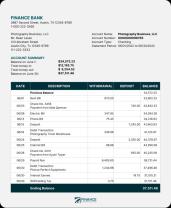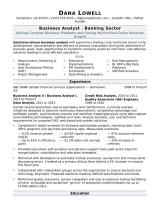What are consumer complaints?
Consumer complaints are formal or informal expressions of dissatisfaction made by customers about a product, service, or business practice. They occur when a consumer feels that a company has failed to meet expectations — whether in terms of quality, safety, service, pricing, or fairness.
These complaints can be submitted directly to the company, shared on public review platforms, or filed with government agencies and consumer protection organizations.
Types of Consumer Complaints
1. Product Quality Issues
Defective or damaged goods
Items not matching the description or advertisement
Example: A laptop that stops working after two weeks despite being sold as “brand new.”
2. Poor Customer Service
Rude, unhelpful, or unresponsive staff
Example: A call center agent hangs up without resolving a billing issue.
3. Billing and Payment Problems
Overcharges, hidden fees, or incorrect billing statements
Example: Being charged twice for the same online purchase.
4. False or Misleading Advertising
Claims that exaggerate or misrepresent a product or service
Example: A “30-day money-back guarantee” that turns out to have hidden conditions.
5. Delivery and Shipping Issues
Late deliveries, missing items, or wrong orders
Example: Ordering a red dress online but receiving a blue one weeks late.
6. Warranty and Guarantee Disputes
Denied warranty claims or refusal to honor repair/replacement policies
Example: A manufacturer refuses to repair a phone even though it’s still under warranty.
7. Privacy and Data Protection Concerns
Unauthorized sharing of personal information or data breaches
Example: Receiving spam emails after sharing contact details with a retailer.
Why Consumer Complaints Matter
For consumers: They help protect rights and ensure fair treatment.
For businesses: They provide feedback to improve products, services, and customer relationships.
For regulators: They help identify patterns of misconduct and enforce consumer protection laws.
Navigating the Consumer Landscape: Understanding Your Rights and Resolving Complaints
In today's dynamic marketplace, consumers frequently encounter issues with products, services, or business practices. Knowing your rights, understanding common complaint types, and knowing how to effectively seek resolution are crucial skills for every consumer. This article provides a comprehensive guide to navigating the consumer complaint landscape.
What Are Common Types of Consumer Complaints?
Consumer complaints can arise from a wide array of issues, reflecting the diverse interactions individuals have with businesses. Some of the most common types include:
Product-Related Issues:
Defective or Broken Products: Items that do not function as intended, break prematurely, or arrive damaged.
Products Not Meeting Expectations: When a product, though not necessarily defective, fails to deliver on advertised promises or the consumer's reasonable expectations.
Product Recalls: Concerns related to products deemed unsafe and recalled by the manufacturer, especially if the recall process is poorly managed.
Service-Related Issues:
Poor Quality or Incomplete Work: Services that are performed inadequately, left unfinished, or take an unreasonable amount of time.
Long Wait Times and Poor Customer Service: Extended hold times, unresponsive support, or indifferent customer service agents.
Failure to Follow Through on Promises: When a company does not deliver on commitments made during the sales or service process.
Financial and Billing Issues:
Billing Errors or Hidden Fees: Incorrect charges, unexpected fees, or charges for services not clearly disclosed.
Overcharging: Being charged more than the agreed-upon price for a product or service.
Refund or Exchange Disputes: Difficulties in obtaining refunds or making exchanges for returned items.
Predatory Lending: Unethical lending practices involving high-interest rates or misleading loan terms.
Deceptive Business Practices:
Misleading or False Advertising: Businesses making untrue or exaggerated claims about products or services.
Scams and Fraud: Deceptive schemes designed to trick consumers out of money or personal information.
Unfair Debt Collection Practices: Harassment or illegal tactics used by debt collectors.
How Can You File a Consumer Complaint Effectively?
Filing an effective consumer complaint involves a systematic approach to maximize your chances of a favorable resolution:
Contact the Company Directly First: Before escalating, always try to resolve the issue directly with the business. This might involve contacting their customer service, the store manager, or the relevant department. Clearly explain the problem and what resolution you seek (e.g., refund, repair, replacement).
Gather All Evidence and Documentation: This is crucial. Collect everything related to your complaint, including:
Receipts, invoices, or contracts.
Emails, chat logs, or notes from phone calls (including dates, times, and names of people you spoke with).
Photos or videos of the defective product or issue.
Product descriptions, warranties, or advertisements.
Draft a Clear and Concise Complaint Letter/Email: If direct contact doesn't resolve the issue, prepare a formal written complaint. Include:
Your contact information.
Relevant account or transaction numbers.
The date and place of purchase/service.
A factual, polite, and brief explanation of the problem.
The specific resolution you are seeking.
Copies of all supporting documents (keep originals).
A reasonable deadline for a response (e.g., 10-14 business days) and what your next steps will be if you don't receive a satisfactory reply.
Consider sending it via certified mail with a return receipt for proof of delivery.
Choose the Right Agency/Authority: If the company doesn't resolve your complaint, you'll need to escalate it to an appropriate third party. The choice of agency depends on the nature of your complaint.
What Agencies Handle Consumer Disputes?
Various government agencies and non-profit organizations are dedicated to assisting consumers with disputes:
Federal Agencies (U.S.):
Federal Trade Commission (FTC): Handles complaints about deceptive or unfair business practices, fraud, identity theft, and telemarketing scams. While the FTC doesn't typically resolve individual complaints, it uses reports to identify patterns and initiate investigations.
Consumer Financial Protection Bureau (CFPB): Focuses on complaints related to financial products and services, including mortgages, credit cards, bank accounts, and student loans. The CFPB forwards complaints to companies for a response and publishes anonymized data.
Other Specific Agencies: Depending on the industry, other federal agencies might be relevant (e.g., Department of Transportation for airline complaints, Federal Communications Commission for telecom issues).
State and Local Agencies:
State Attorney General's Office: Most state attorneys general have consumer protection divisions that handle a wide range of complaints against businesses within their state. They often offer mediation services and can take enforcement actions.
Local Consumer Protection Offices: Many cities and counties have local consumer affairs departments that can assist with disputes.
Non-Governmental Organizations:
Better Business Bureau (BBB): A non-profit organization that helps resolve disputes between consumers and businesses. Businesses often strive to maintain a good BBB rating, which can encourage resolution.
Industry-Specific Organizations: Many industries have their own self-regulatory bodies or associations that handle complaints (e.g., automotive dealer associations, real estate boards).
What Are Your Rights as a Consumer?
The foundation of consumer protection in many countries stems from the "Consumer Bill of Rights," first introduced by President John F. Kennedy in 1962. These fundamental rights include:
The Right to Safety: To be protected against the marketing of products and services that are hazardous to health or life.
The Right to Be Informed: To be protected against fraudulent, deceitful, or grossly misleading information, advertising, labeling, or other practices, and to be given the facts needed to make informed choices.
The Right to Choose: To have available a variety of products and services at competitive prices,
ensuring fair competition. The Right to Be Heard: To be assured that consumer interests will receive full and sympathetic consideration in the formulation of government policy, both through legislation and administrative regulations.
The Right to Redress: To work with established mechanisms to have problems corrected and to receive compensation for poor service or for products that do not function properly.
The Right to Consumer Education: To have access to programs and information that help consumers make better marketplace decisions.
These rights form the basis for consumer protection laws and regulations designed to ensure fair and ethical treatment in the marketplace.
How Are Consumer Complaints Resolved Legally?
When direct negotiation and agency intervention don't lead to a resolution, consumers may consider legal avenues. The legal resolution process can involve several stages:
Mediation: Often the first step in formal dispute resolution, mediation involves a neutral third party (the mediator) who facilitates communication between the consumer and the business. The mediator helps both sides explore solutions and reach a mutually acceptable agreement. Mediation is voluntary and non-binding, meaning neither party is forced to accept a solution.
Arbitration: A more formal process than mediation, arbitration involves a neutral third-party arbitrator who hears evidence and arguments from both sides and then makes a decision. Arbitration can be either voluntary or mandatory (if stipulated in a contract). The arbitrator's decision is often binding, meaning it is legally enforceable.
Small Claims Court: For disputes involving smaller monetary amounts (which vary by jurisdiction), consumers can often file a lawsuit in small claims court. This process is designed to be less formal and expensive than traditional litigation, and individuals can often represent themselves without a lawyer.
Traditional Litigation (Civil Lawsuit): For larger or more complex disputes, a consumer may file a civil lawsuit in a higher court. This is a more formal, time-consuming, and expensive process, typically requiring legal representation. The goal is to obtain a court order for damages (monetary compensation), specific performance (e.g., forcing the company to fulfill a contract), or an injunction (e.g., stopping a harmful business practice).
Class Action Lawsuits: If many consumers have been harmed by the same unfair or deceptive practice, a class action lawsuit may be initiated. In this scenario, one or more individuals represent a larger group of similarly affected consumers.
Consumer protection laws at both federal and state levels provide the legal framework for these resolution methods, prohibiting unfair, deceptive, or fraudulent business practices and offering mechanisms for consumers to seek redress.












